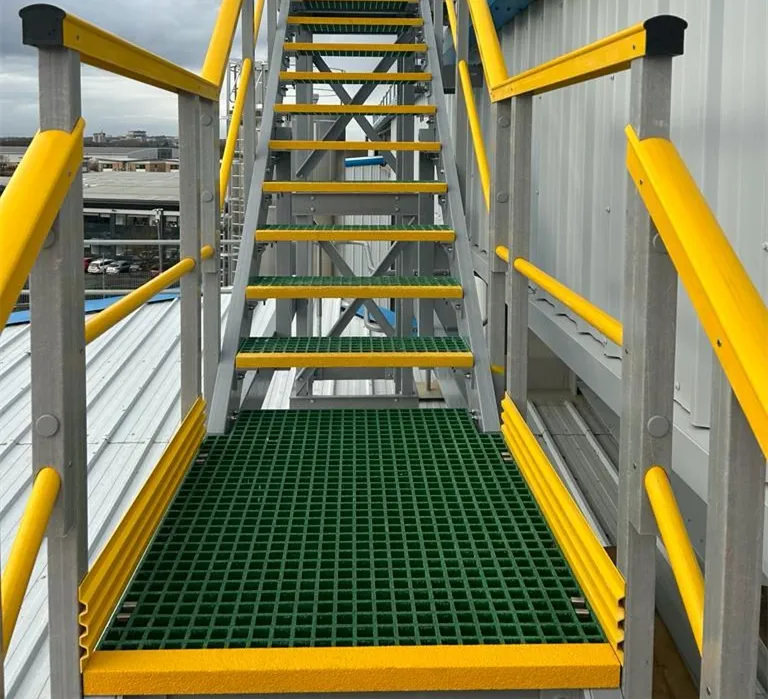loading...
- No. 9, Xingyuan South Street, Dongwaihuan Road, Zaoqiang County, Hengshui, Hebei, China
- admin@zjcomposites.com
- +86 15097380338
- Welcome to visit our website!
Advancements in FRP Pressure Vessel Technology and Applications for Enhanced Performance
Understanding FRP Pressure Vessels Design, Applications, and Advantages
Fiber Reinforced Polymer (FRP) pressure vessels are innovative composite materials designed to handle high-pressure applications in various industries. As the demand for lightweight, corrosion-resistant, and durable materials increases, FRP pressure vessels have gained significant attention for their advantages over traditional materials such as steel or aluminum. This article will explore the design and advantages of FRP pressure vessels, their applications, and the factors contributing to their growing popularity.
Design Principles of FRP Pressure Vessels
FRP pressure vessels are composed of a polymer matrix reinforced with fibers, typically glass or carbon. The combination of these materials provides enhanced mechanical properties, such as tensile strength, stiffness, and resistance to environmental degradation. The design of these vessels involves meticulous engineering to ensure they can withstand internal pressures while maintaining structural integrity over their service life.
One of the primary design considerations is the selection of fiber orientation and layering. Fibers can be arranged in different configurations, including longitudinal, circumferential, or a combination of both, to optimize performance based on the specific application requirements. The choice of resin also plays a crucial role, as it affects the vessel’s resistance to chemicals and temperature variations.
Furthermore, the manufacturing process for FRP pressure vessels typically involves filament winding or resin transfer molding (RTM). These methods allow for precise control over material distribution and orientation, resulting in vessels that meet stringent safety and performance standards.
Applications of FRP Pressure Vessels
The versatile nature of FRP pressure vessels makes them suitable for a wide range of applications across various industries. Some notable areas of application include
1. Oil and Gas Industry FRP pressure vessels are used for storing and transporting hydrocarbons, as well as in offshore platforms where weight reduction is critical. Their resistance to corrosion from aggressive chemicals makes them ideal for these environments.
2. Chemical Processing In chemical plants, FRP vessels are employed to store reactive substances safely. Their ability to withstand high pressures and corrosive environments makes them an excellent choice for processing various chemicals, including acids and solvents.
frp pressure vessels

3. Water Treatment FRP pressure vessels are increasingly used in water treatment facilities for filtration, purification, and even desalination processes. Their corrosion resistance and lightweight nature contribute to the efficiency of these operations.
4. Aerospace and Automotive In the aerospace sector, FRP pressure vessels are utilized in fuel tanks and other components where weight reduction is crucial. Similarly, in the automotive industry, they are used to manufacture lightweight components, contributing to improved fuel efficiency.
Advantages of FRP Pressure Vessels
1. Corrosion Resistance One of the most significant advantages of FRP pressure vessels is their resistance to corrosion. Unlike metal vessels that can corrode over time, FRP structures remain robust in harsh environments, extending their service life and reducing maintenance costs.
2. Lightweight FRP materials are much lighter than conventional metals, making the vessels easier to handle, transport, and install. This weight reduction also contributes to savings in structural support and transportation costs.
3. Design Flexibility The manufacturing processes for FRP allow for intricate designs and custom shapes that may not be feasible with traditional materials. This flexibility enables the creation of vessels tailored to specific operational requirements.
4. Thermal Insulation FRP materials provide better thermal insulation compared to metals, which can help maintain desired temperatures and improve energy efficiency in certain applications.
5. Cost-Effectiveness While the initial investment for FRP pressure vessels may be higher than traditional materials, their long-term savings in maintenance, lifecycle durability, and operational efficiency often outweigh these costs.
Conclusion
FRP pressure vessels represent a significant advancement in material science, providing effective solutions for high-pressure applications where safety, durability, and performance are critical. As technology progresses and industries continue to seek lightweight and corrosion-resistant alternatives, the adoption of FRP pressure vessels is expected to expand, paving the way for innovative applications across a multitude of sectors. With their numerous advantages, FRP pressure vessels are poised to become a standard choice for engineers and manufacturers looking to enhance operational efficiency and safety.
-
The Rise of FRP Profiles: Strong, Lightweight, and Built to LastNewsJul.14,2025
-
SMC Panel Tanks: A Modern Water Storage Solution for All EnvironmentsNewsJul.14,2025
-
GRP Grating: A Modern Solution for Safe and Durable Access SystemsNewsJul.14,2025
-
Galvanized Steel Water Tanks: Durable, Reliable, and Ready for UseNewsJul.14,2025
-
FRP Mini Mesh Grating: The Safer, Smarter Flooring SolutionNewsJul.14,2025
-
Exploring FRP Vessels: Durable Solutions for Modern Fluid HandlingNewsJul.14,2025
-
GRP Structures: The Future of Lightweight, High-Performance EngineeringNewsJun.20,2025
